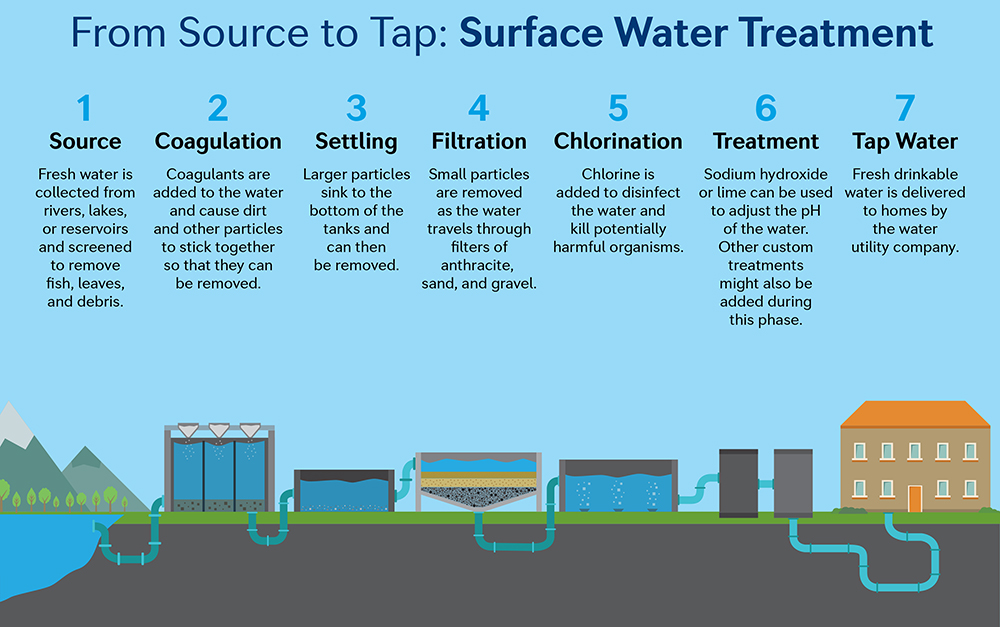The Water Cycle
Oceans cover three-quarters of the earth’s surface. From these vast reservoirs, water rises into the sky through evaporation, leaving behind salt in the process. It then collects into clouds which, carried by the winds, precipitate on the land in the form of rain, snow, hail, sleet, fog, and dew. The Water Cycle, also known as the Hydrologic Cycle, includes many mechanisms for both evaporation and return to the ocean as shown in the diagram below.

Water Sources & Typical Treatment
Our water is obtained from surface water (streams, river, and reservoirs) and groundwater (wells). To assure that water quality meets regulatory requirements and is protective of human health, it must be treated using various processes. Typical treatment processes depend on whether the source water is surface water or groundwater.


Guides & Tips
Does your bill seem unusually high? Think you might have a leak? We're here to help.
Don't Water When It's Windy
Don't water the lawn, plants, and flowers when it's windy. You'll use more water since the wind "thins" the water, spreading it over a wider area.
More Water TipsLook for the Label
Look for products that have the WaterSense label. They're more efficient and can provide significant water savings.
See More TipsDon't Leave the Water Running
You can waste up to five gallons of water if you leave the tap running when shaving or brushing your teeth!
See More Tips